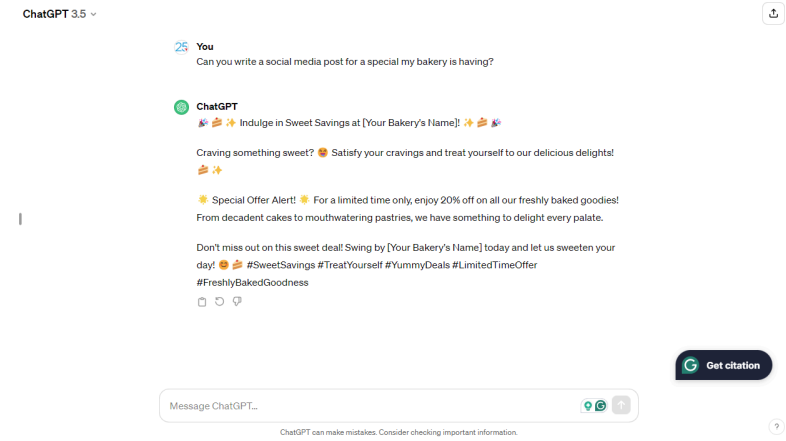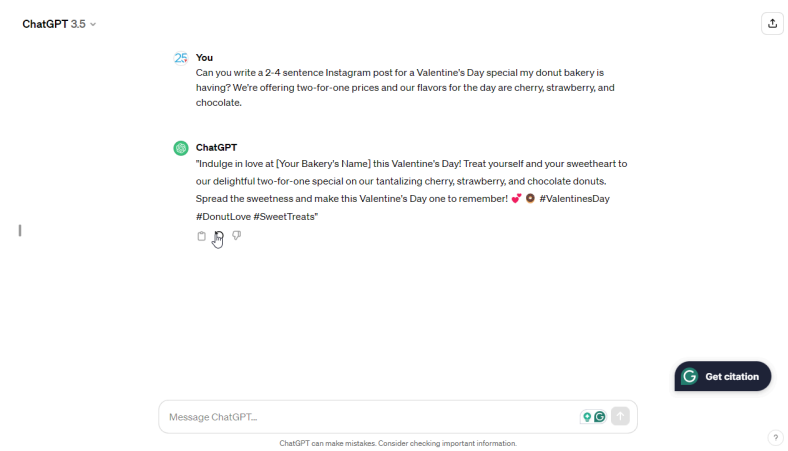Beginner AI Strategies for Small Businesses + Organizations

AI is a helpful tool that can make it much easier to accomplish day-to-day tasks, especially for small businesses or organizations. But it can be difficult to know where to start when using AI, especially with so much information available online and so much constantly changing in the AI landscape.
One of the best places to start if you’re interested in using AI is prompt engineering. Prompt engineering is the process of helping AI better understand what we’re asking it to do. By creating prompts with care, we can get high-quality content from AI tools with less effort.
To begin with, what is a prompt? A prompt is the input you provide to an AI tool. Input can be written, such as with tools like ChatGPT or Google’s Gemini, or spoken such as with Siri or Alexa.
Prompt Engineering Tips
If you’re looking to start using AI tools, these three tips are a great way to test the waters without diving straight into the deep end.
Tip #1: Be Specific
Telling you to be specific might seem like a no-brainer, but it’s surprisingly easy to forget. When you include information like context, length and style in your prompt, it gives an AI tool more to work with. This results in better content that’s interesting and relevant. It can also prevent an AI tool from hallucinating, which is when AI generates content that is irrelevant or inaccurate.
Take a look at the difference between these two prompts I wrote in ChatGPT. The first prompt is vague, while the second includes specific relevant information.


Big difference, right? ChatGPT’s response to my first prompt is very generic. It also includes an example of hallucination. My prompt doesn’t say anything about a 20% off sale, but ChatGPT doesn’t have enough information, so it’s trying to add things to flesh out the response. You can play around with what information you include in your prompt, and you might decide you prefer to add some of that information when editing later.
Tip #2: Use a Reference Text
Giving an AI tool a piece of text to reference can focus the content it creates for you. For example, if you’re trying to achieve a specific tone with your social posts, you can ask an AI tool to create a caption for an Instagram post and provide one of your recent posts for reference.
Tip #3: Break Up Complex Tasks
In my experience, AI is a bit like a kindergartener. If you’ve ever tried to help a child through a task with a bunch of steps, you’ve likely found it’s best to give them one instruction at a time and wait until they’re finished before giving them the next one. Otherwise, they end up skipping steps or rushing through things.
AI tools can be very similar to small children in this way. If given a large complex task all at once, AI tools can rush through creating a response. This can lead to simple mistakes or less than high-quality content.
If I was writing a blog and wanted AI assistance, I might first get help with brainstorming by asking an AI tool to generate a list of potential topics. I could then pick a topic and start researching and writing. While writing, I might have trouble thinking of a good opening sentence for my third paragraph and ask an AI tool for some suggestions. When I reach the end of the blog, I can workshop a great call to action or conclusion with help from an AI tool.
By breaking this task into smaller pieces, I not only prevent the AI tool from making simple mistakes, but I force it to slow down, and I’ve found this gives me better content.
The All-Important Ethical Caveat
AI tools can be very helpful for a variety of tasks, but it’s important that we as humans thoroughly fact-check and edit AI-generated content to make it our own. The idea of typing a prompt into an AI tool, copy-pasting the response into a document and publishing it without doing any research or making edits set off alarm bells in my brain.
The data that AI is trained on can include misinformation at best and dark, disturbing content at worst. AI can exacerbate stereotypes and biases of all kinds. As this technology is still new, there is ambiguity when it comes to the copyright ownership of AI-generated content, and the ethical dilemmas don’t end there.
To be clear: I don’t think AI is evil. But as with any tool, it has the potential to be corrupted by its users and used in circumstances it shouldn't be. We can combat this with common-sense practices like fact-checking and heavily editing content, being critical of the contexts in which we use AI and staying informed as this technology continues to develop. To me, these practices are not optional. They are an integral part of responsibly using AI tools, and I encourage you to make them a part of the way you interact with AI as well.
The Greater Des Moines Partnership celebrates the Greater Des Moines (DSM) entrepreneur community and helps small businesses succeed with one-of-a-kind resources and opportunities for networking. Find out how other entrepreneurs have found success by reading their stories and attending local small business events in the region.
Neeve Funston
Neeve Funston is a Copywriter at Global Reach Internet Productions. She works with clients in law, finance and medicine to integrate SEO best practices into high-quality strategic content. Neeve is experienced in using AI's strengths for copywriting while avoiding its shortcomings, especially as AI changes the landscape of digital marketing.